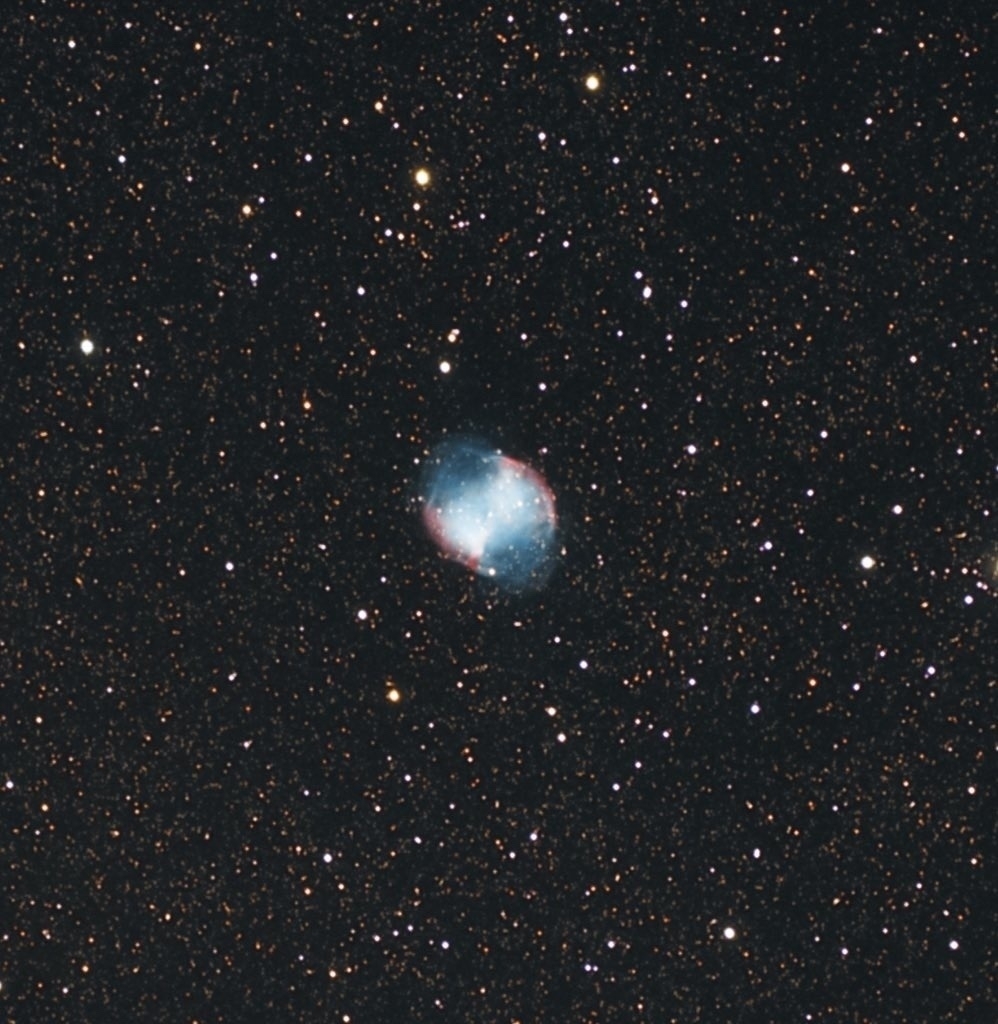Remains of exploded stars
As the stars (of the size about 1 to 8 solar masses) age, they get bigger and become red giants. In their outer cooler shell, they start to accumulate elements of higher atomic number as a result of the nuclear fusion that fuels the stars. At a certain point, there is an explosion that expels the outer layers of the star out in space and the nucleus of the star becomes a smaller dwarf star that keeps shining. The expanding and glowing shell of the expelled gas from the explosion is called a planetary nebula and we can see many of these in the night sky using even a small telescope.
The appearance of these nebulae depends on our point of view. If we are viewing from the polar region of the star, it appears as a ring of nebulosity with the dwarf star in the clear central region. A good example of this is the Ring nebula (M 57) on the left. The white dwarf in the center can be seen if you zoom in on the image. If our point of view is from the equatorial plane, the remnant of the explosion appears as circular nebula without a clear center. The Dumbbell nebula (M 27) on the right is a good example of this view. Both these planetary nebulae formed about 7,000 to 10,000 years ago as a result of an exploded red giant star.
Both these images were taken using William Optics megrez 90 telescope attached to Nikon Z6 camera. Total exposure of 45 minutes (1 min subexposures). Processed using SIRIL and Adobe Photoshop.

